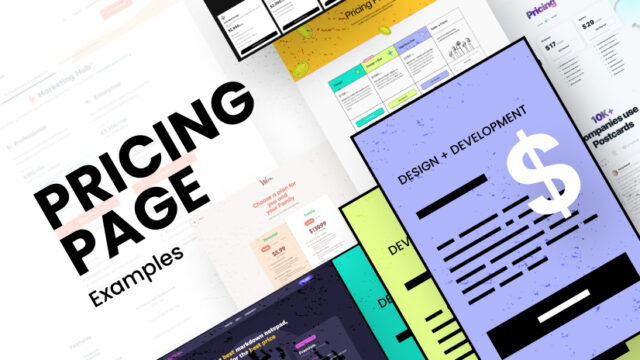A well-structured service pricing page is essential for any business that offers services. It not only helps potential customers understand your offerings but also aids in building trust and transparency. A pricing page should be clear, informative, and designed to encourage conversions. In this blog, we’ll discuss effective tips for creating a compelling service pricing page for your website.

1. Know Your Audience
Before you begin designing your pricing page, it’s crucial to understand your target audience. Identify their needs, preferences, and pain points. Consider factors such as:
- Demographics: Age, location, and income level.
- Buying Behavior: What services are they interested in, and how do they typically make purchasing decisions?
- Competitor Analysis: Look at how competitors structure their pricing pages and what appeals to their audience.
2. Keep It Simple and Clear
Clarity is key when presenting pricing information. Avoid jargon and complex terms that might confuse potential customers. Follow these tips to enhance clarity:
- Use Clear Headers: Break down your pricing page into sections with clear, descriptive headers.
- Limit Pricing Options: Too many options can overwhelm visitors. Aim for a maximum of three to five pricing tiers or packages.
- Bullet Points: Use bullet points to highlight key features and benefits of each service, making it easy for users to scan.
3. Offer Transparent Pricing
Transparency builds trust. Clearly outline what’s included in each pricing tier and avoid hidden fees. Consider the following:
- Itemized Pricing: If applicable, break down costs associated with each service to help customers understand what they’re paying for.
- Subscription Models: If your services are offered on a subscription basis, clarify the billing cycle (monthly, annually, etc.) and any cancellation policies.
4. Highlight Value Proposition
Your pricing page should emphasize the value customers receive at each pricing tier. Consider these approaches:
- Feature Comparison Tables: Create a comparison table that highlights the differences between each service tier, making it easy for customers to see what they gain by opting for a higher-priced option.
- Use Testimonials and Case Studies: Include customer testimonials or case studies that showcase how your services have positively impacted previous clients. This social proof reinforces the value of your offerings.
5. Incorporate Call-to-Action (CTA)
A strong call-to-action is essential for driving conversions. Ensure that your pricing page includes clear CTAs that guide visitors toward the next step. Here are some effective strategies:
- Use Action-Oriented Language: Phrases like “Get Started,” “Sign Up Now,” or “Request a Free Quote” encourage action.
- Placement: Position your CTAs prominently on the page, making them easy to find without scrolling too much.
6. Consider User Experience (UX) Design
A well-designed pricing page enhances user experience, making it easier for visitors to navigate and understand your offerings. Keep the following design principles in mind:
- Responsive Design: Ensure your pricing page is mobile-friendly, as many users will access it via smartphones or tablets.
- Visual Hierarchy: Use font sizes, colors, and spacing to create a clear visual hierarchy that guides the reader’s eye to important information.
- Consistent Branding: Maintain consistent branding elements, such as colors and fonts, throughout the page to reinforce your brand identity.
7. A/B Testing
Experimenting with different layouts, content, and CTAs can help you optimize your pricing page for better conversions. Consider conducting A/B tests to determine what works best for your audience. Key elements to test include:
- Different Pricing Structures: Try presenting prices in different formats (e.g., monthly vs. annual pricing).
- Variations of CTAs: Test different phrases or designs for your CTAs to see which one drives more clicks.
8. Provide Additional Resources
Consider including links to additional resources that can help potential customers make informed decisions. This could include:
- FAQs: Address common questions or concerns regarding your services or pricing.
- Blog Articles: Link to relevant blog posts that provide more in-depth information about your services or industry.
- Live Chat or Support Options: Offer live chat support or contact information for visitors who may have questions before making a decision.
Conclusion
Creating an effective service pricing page is a critical aspect of your website that can significantly impact your conversion rates. By focusing on clarity, transparency, and user experience, you can design a pricing page that resonates with your audience and encourages them to take action. Implement the tips discussed in this blog to create a compelling service pricing page that drives sales and builds customer trust.


No responses yet